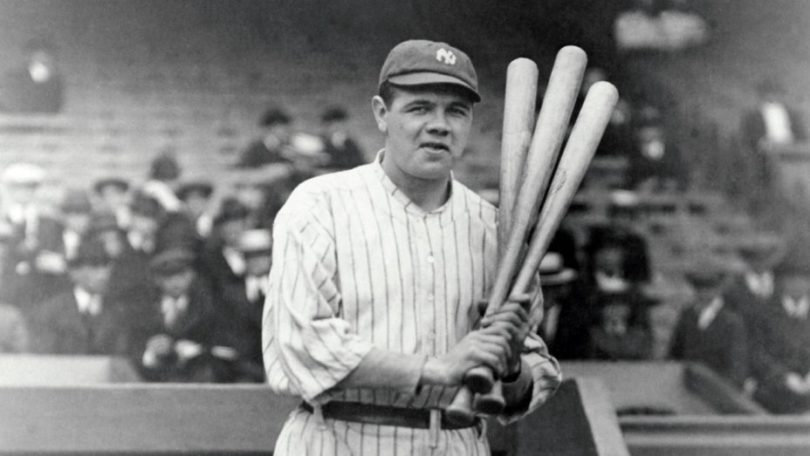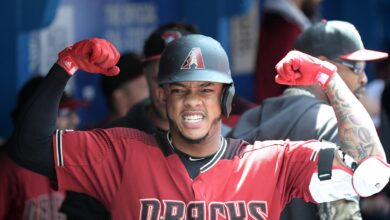For the first hundred plus years baseball front offices seemed to pay little attention to the prized pitching arms counted upon to carry their hopes of postseason success. Times have changed, with offensive production varying from “Dead Ball” eras of pitching domination to the steriod and expansion eras of hurling futility. No matter the era, coddling the wings of aces didn’t really factor into mainstream concerns until around the turning of the millenium. Since then few topics have elicited more debate.
Tim Lincecum, who many believed was an injury risk because of his small stature, managed to increase his innings from 177.2 in 2007 (as a 22 year old) to 227 in 2008. Not only did he not see a decrease in production that year (2.62 ERA), but he followed it up with an even better year in 2009 (2.5 ERA), while winning consecutive CY Youngs.
On the other hand, Mark Prior fared quite differently after his workload increased from 167.2 to 211.1 innings between 2002 and 2003, also his 22 and 23 year old seasons. Prior had a phenomenal 2003 season, posting a 2.43 ERA, but was plagued by injuries after, only reaching above 118 innings in 2005, essentially his last season in the majors to this point (he had 9 ineffective starts in 2006). Pundits raced to blame then Cubs skipper Dusty Baker for ruining his prized right arm (along with fellow phenom Kerry Wood) with overuse. Whether front offices fully bought the theory, no member of a major league hierarchy neglected to ponder the possibility that overusing ones young arms could have catastrophic implications again.
One is left to wonder the reasons for shifting thought on the subject. Sure, the stark examples of Wood and Prior are obvious, but the stakes have been raised. With the increase in salaries and signing bonuses for heralded draft picks, the financial obligations toward protecting the arms of young flamethrowers have never been higher.
Complicating matters further are instances such as Stephen Strasburg. One certainly can’t blame the Nationals for him succumbing to Tommy John surgery, ending perhaps the most hyped pitching debut in baseball history. They were unbelievably careful in pitching counts during all of his minor and major league starts. No matter how careful a team is with their youngsters, factors such as mechanics, accidents and other freak occurrences can derail a pitchers season, or even career.
Instances of “babying” pitchers have arguably even been detrimental to young pitchers. In 2007 Joba Chamberlain became the poster boy for protective handling of pitchers. Yankee brass gave then manager Joe Torre several restrictions upon his use, including not allowing him to be used on consecutive days. In 2008 Chamberlain bounced between the bullpen and the starting five before converting to starting full time in 2009. Chamberlain started off strong before being given over 2 weeks off, including the all-star break, in an effort to keep his inning total in check. He went on to suffer a terrible second half en route to a 4.75 ERA.
Many, including GM Brian Cashman, have pointed towards a bout of rotator cuff tendinitis in 2008 for Chamberlain’s recent struggles, but his success in early 2009 would tend to suggest that the constant shuttling between the rotation and bullpen and inning limitations may have had an irrevocable effect upon his development as a front-of-the rotation arm.
Instead of worrying about innings limitations I would argue the best way to safeguard a young pitchers arm would be to monitor pitch counts. The main difference between Lincecum’s 2007 season and Prior’s 2002 was in the amount of times they stepped to the rubber per game. While Lincecum was very rarely asked to throw more than 100 pitches per start, Prior AVERAGED 113.4 pitches per start, including an average of 126 pitches during the September pennant drive. Last year Johnathan Broxton was asked to throw 48 pitches (or roughly 3 times the normal appearance for the Dodgers closer) during a June 27th game against the Yankees. The once dominant fireman, went on to allow nearly 2 baserunners per inning after, en route to losing his position as closer.
Few have been more vocal on the subject as Nolan Ryan who constantly threw 300 innings in a season while showcasing 100 MPH heat into his 40’s. The current President of the Rangers has made no secrets of limiting the dependence on pitch counts throughout the entire organization starting in 2009. It should be an interesting test case to see how prospects such as Martin Perez and Tanner Scheppers fare. Even more telling, perhaps, will be if Rookie of the Year Neftali Feliz wins a spot in the rotation this spring. Feliz pitched less than 70 innings last year. I would argue that the amount of pitches he throws per start will be more important than even a 100 inning increase in his workload for 2011. There are many cautionary tales such as Prior, Broxton and Edwin Jackson’s 149 pitch no-hitter (2010) as evidence that pitch counts should be noted for young starters, but little evidence that innings, in themselves have been a pivotal factor in pitching injuries. While I wouldn’t advocate a 20 year old throwing 250 + innnings, I feel the issue is fairly overblown in baseball today.





